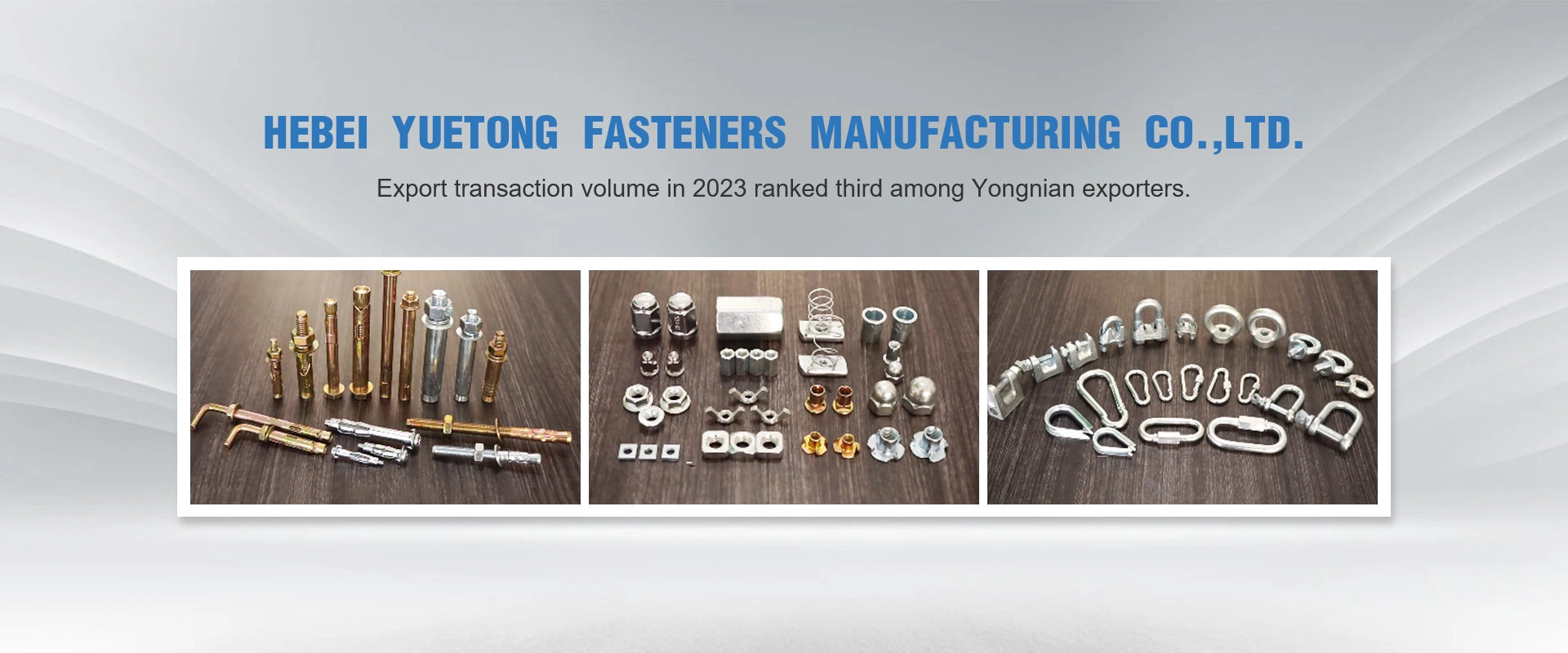Окт . 08, 2024 01:36 Back to list
wire rope clamp fixing
Understanding Wire Rope Clamp Fixing A Comprehensive Guide
Wire rope clamps are essential tools in various industrial applications, particularly in lifting and rigging tasks. They are primarily used to secure wire ropes together, create loops, or terminate a wire rope. Proper fixing with wire rope clamps ensures safety and reliability, making it a critical aspect of any rigging operation.
What are Wire Rope Clamps?
Wire rope clamps, also known as wire rope clips or cable clamps, consist of two pieces of metal—usually steel—that grip the wire rope when tightened. These clamps feature a U-bolt design, allowing the operator to secure the wire rope tightly. Clamps come in various sizes and are designed to accommodate different wire rope diameters. They are often coated or galvanized to resist corrosion, making them suitable for both indoor and outdoor use.
Types of Wire Rope Clamps
There are several types of wire rope clamps, each suited for specific applications
1. Standard Wire Rope Clamps Used for everyday applications, these clamps are designed to grip the wire rope securely and are easy to install and remove. 2. Swage Clamps These are permanently compressed onto the wire rope using hydraulic tools, providing a strong and reliable hold for heavy-duty lifting applications.
3. Wedge Socket Clamps These clamps are designed for use with wire ropes that need to be quickly connected and disconnected, making them ideal for temporary setups.
4. Heavy-Duty Clamps Constructed from high-grade materials, heavy-duty clamps are designed for extreme conditions, ensuring safety and strength in challenging environments.
wire rope clamp fixing

Importance of Proper Fixing
The fixing process of wire rope clamps is crucial for safety. Incorrect installation can lead to serious accidents, as the clamps may fail under tension if not secured properly. Here are some guidelines for proper fixing
1. Select the Correct Size Always choose a clamp that is appropriate for the wire rope diameter. An oversized or undersized clamp may not hold the wire securely.
2. Follow the Manufacturer’s Instructions Each type of clamp comes with specific installation guidelines. Following these ensures the integrity of the fixing.
3. Use Multiple Clamps When creating a loop or terminating a wire rope, it is advisable to use at least two clamps. This redundancy enhances safety and prevents slippage.
4. Tighten Properly Ensure that the nuts on the U-bolt are tightened adequately. Regular checks should be conducted to ensure that they remain tight during use.
5. Inspect Regularly Regularly inspect wire rope clamps for signs of wear or damage. Replace any clamps that show signs of fatigue, rust, or deformation.
Conclusion
In conclusion, wire rope clamp fixing is a vital component of rigging and lifting operations. By understanding the different types of clamps and their proper installation techniques, operators can significantly enhance the safety and reliability of their lifting equipment. Remember that safety should always be the top priority; investing in quality clamps and following best practices can prevent accidents and ensure successful operations. Always prioritize safety, and stay informed about the latest developments in wire rope technology and standards.
-
The Ubiquitous Reach of DIN934 in Application Realms
NewsMay.16,2025
-
Exploring Different Bolt Types
NewsMay.16,2025
-
Cracking the Code of Sleeve Anchor Mastery
NewsMay.16,2025
-
Clamp Design Principles,Types and Innovations
NewsMay.16,2025
-
Artistry Inspired by the Humble Anchor Bolt
NewsMay.16,2025
-
A Deep Dive into Screw Types
NewsMay.16,2025


